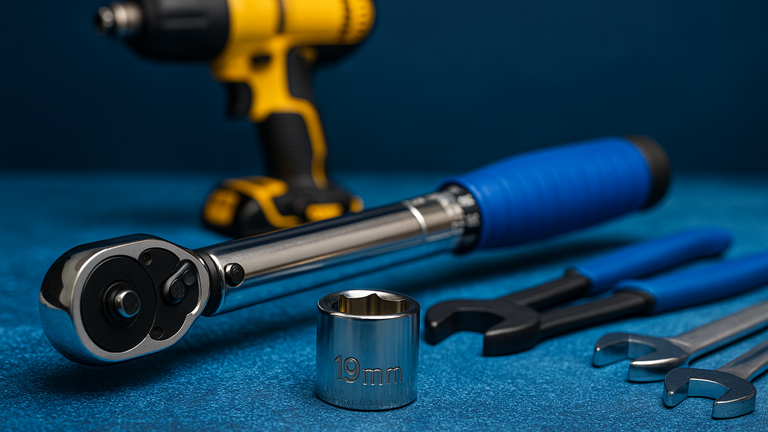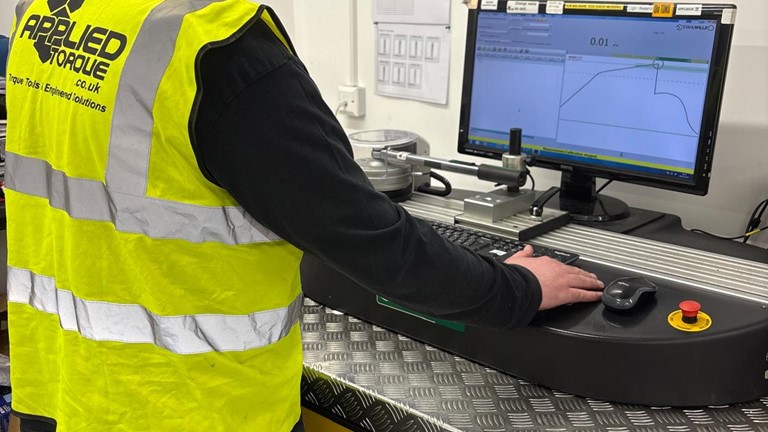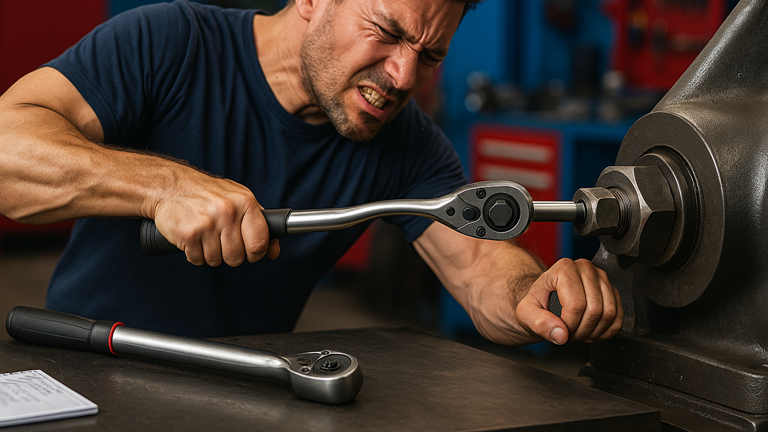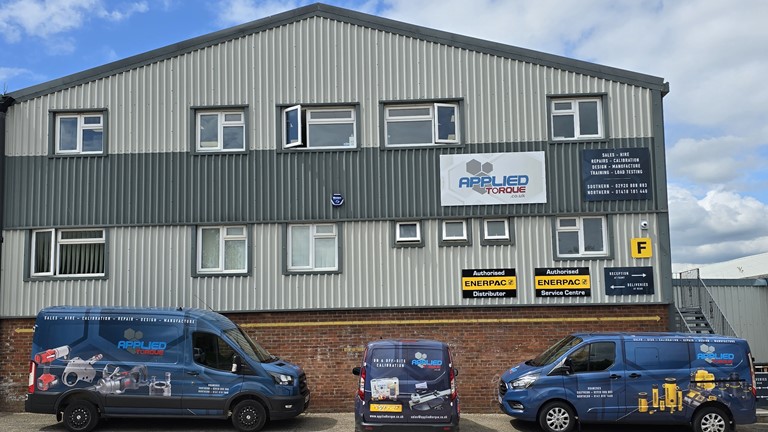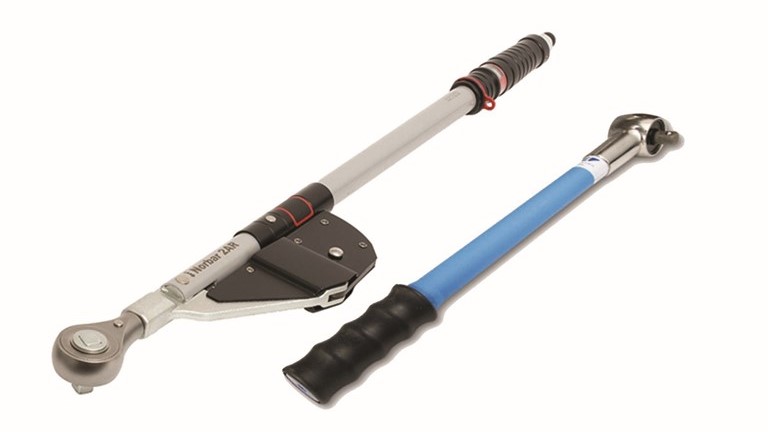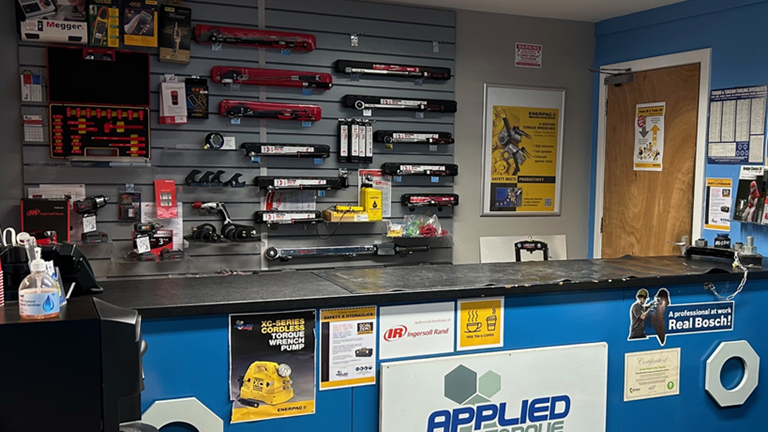Why Should Torque Wrenches Be Used Properly?
Torque wrenches are indispensable tools in any professional or home workshop, especially when precision is paramount.
Ensuring bolts and fasteners are tightened to the correct torque specification is crucial not only for the longevity of the components but also for safety. Improper use of torque wrenches can lead to inaccurate torque application, resulting in potential damage, equipment failure, or even serious accidents. Applied Torque are the UK’s number 1 Torque Wrench Supplier. With Torque Wrench Hire, Purchase, Calibration and Servicing.
This article will highlight 11 common mistakes people make when using torque wrenches and provide guidance on how to avoid them.
1. Not Calibrating Regularly
One of the most frequent mistakes is neglecting regular calibration of your torque wrench. Calibration ensures that the tool delivers accurate torque readings, which is essential for precise work. Using an uncalibrated torque wrench can lead to under-tightening or over-tightening, compromising the integrity of the assembly. Applied Torque is the authorised distributor and stockists for most of the big name torque tooling brands such as Norbar Torque Wrenches, Gedore Torque Wrenches, Stahlwille Torque Wrenches and Teng Tools Torque Wrenches.

A good example of an organised calibration room at the Applied Torque Depot
How often should you calibrate? Each tool is different, but as a rule of thumb, It’s generally recommended to calibrate your torque wrench once a year or every 5,000 cycles, whichever comes first. However, if you use your wrench frequently or in demanding conditions, more frequent calibration may be necessary. Regular maintenance checks can also help extend the life and reliability of the tool.
Applied Torque supply our calibrated Torque wrenches with quality control in mind. Each calibrated torque wrench comes with a certificate of calibration along with a calibration label that shows the date of calibration, the date calibration is next due, tool serial numbers and calibration job traceability references.
For professional calibration services and advice, consider contacting experts or suppliers, such as our Torque Wrench Calibration & Servicing.
2. Incorrect Torque Settings
Setting the correct torque value is critical to the success of any task involving a torque wrench. A common mistake is either setting the torque too high or too low, leading to improper tightening. This can cause components to loosen over time or become overstressed and fail prematurely.
Step-by-step guide to setting torque:
- Identify the correct torque specification for your application.
- Adjust the wrench to the desired torque setting by turning the handle.
- Lock the setting in place to avoid accidental changes.
- Apply the torque slowly and steadily until the wrench clicks or signals that the desired torque has been reached.
Always refer to the manufacturer’s guidelines and double-check your settings before use. Properly setting the torque will ensure both the quality of your work and the longevity of your tool. If you’re looking for more powerful solutions you can purchase or hire our Torque Wrench Multipliers.
3. Over-tightening or Under-tightening
Over-tightening is just as problematic as under-tightening. Both can lead to catastrophic failures in mechanical assemblies. Over-Tightening can strip threads, break bolts, and damage components, while under-tightening can cause parts to loosen over time, leading to malfunctions or even accidents.

Sheard bolts due to overtightening.
To avoid these issues, make sure to:
- Use the correct torque specifications for the material and fastener.
- Apply torque slowly and monitor the wrench's feedback.
- Always finish with a controlled, steady pull rather than a jerky motion.
Understanding the implications of incorrect torque application is essential for any technician or mechanic. The right technique and attention to detail can prevent costly mistakes and ensure the reliability of the assembly.
4. Improper Storage
How you store your torque wrench has a significant impact on its performance and lifespan. Improper storage, such as leaving the wrench under tension or exposing it to extreme temperatures, can lead to inaccuracies and mechanical issues.
Storage tips:
- Always reset the torque wrench to its lowest setting before storing it.
- Store the wrench in a clean, dry place, ideally in a protective case.
- Avoid environments with extreme temperature fluctuations or high humidity.
Proper torque wrench storage practices will help maintain your tool’s accuracy and extend its useful life, ensuring it performs optimally whenever you need it.
5. Using the Torque Wrench as a General Tool
A torque wrench is designed for a specific purpose: applying a precise amount of torque to fasteners. However, it’s not uncommon for people to misuse torque wrenches as general tools for tasks like loosening bolts or applying excessive force. This misuse can throw off the wrench’s calibration and damage its internal mechanisms.
Avoid misuse by:
- Using appropriate tools, like spanners or socket wrenches, for non-torque tasks.
- Reserving your torque wrench exclusively for tasks that require precise torque application.
Maintaining the accuracy and functionality of your torque wrench means using it only as intended. Misuse can lead to premature tool failure and inaccurate torque readings, jeopardising your work quality.
If you need a more powerful battery operated impact gun, why not take a look at the Ingersoll Rand Impact Gun Range. These can be used in conjunction with your favourite torque wrench.
6. Ignoring the Click or Signal
A common mistake when using a torque wrench is ignoring the click, beep, or other signals that indicate the desired torque has been reached. Continuing to apply force after the wrench has signalled can lead to over-tightening, which can damage the fastener or component.
Best practices:
- Stop applying force immediately when the torque wrench signals.
- Familiarise yourself with the type of signal your wrench provides, whether it's a click, beep, or digital display.
- Practice applying torque in a controlled manner to avoid missing the signal.
Ignoring the signal can compromise the accuracy of your work and lead to costly repairs or safety issues.
7. Not Using the Torque Wrench in a Smooth, Controlled Manner
Torque wrenches require a smooth and controlled application of force to provide accurate readings. Jerky or rapid movements can cause the wrench to overshoot the target torque, leading to over-tightening or inaccurate torque application.
How to use the wrench correctly:
- Apply force gradually and evenly.
- Keep a steady hand and avoid sudden movements.
- Focus on maintaining a smooth, continuous motion until the desired torque is reached.
Using the wrench smoothly ensures that the torque is applied accurately, preserving the integrity of the fastener and the component.
8. Misunderstanding the Torque Wrench's Range
Every torque wrench has a specific range within which it can accurately apply torque. Using the wrench outside of its specified range can lead to inaccurate torque application and potential tool damage.
Tips to avoid this mistake:
- Always check the torque range of your wrench before starting a task.
- Choose a torque wrench that covers the required torque values for your project.
- Avoid using the wrench at the extreme ends of its range, as this can affect accuracy.
Understanding and respecting the torque wrench's range ensures precision and prevents unnecessary wear and tear on the tool.
9. Using the Wrong Type of Torque Wrench
Not all torque wrenches are created equal, and using the wrong type for your application can lead to inaccurate torque application and potential damage. For example, using a beam-type wrench when a click-type wrench is needed can result in errors.
Choosing the right wrench:
- Determine the torque specifications and the type of application.
- Select the appropriate torque wrench based on the required accuracy and ease of use.
- Consult the manufacturer’s recommendations or a professional if you’re unsure.
Using the correct type of torque wrench for the job will help you achieve the precise torque needed and avoid damaging your tools or components.
10. Failing to Zero the Wrench After Use
After using a torque wrench, it's essential to reset it to the lowest setting or to zero. Leaving it set to a high torque value can put unnecessary strain on the internal components, leading to wear and reduced accuracy over time.
Steps to zero the wrench:
- After completing your task, turn the handle to reduce the torque setting to the lowest point.
- Store the wrench in this state to relieve tension on the internal spring.
- Regularly check the zero setting to ensure it's accurate.
Zeroing your wrench after each use is a simple yet crucial step in maintaining its longevity and accuracy.
11. Disregarding Environmental Factors
Environmental conditions such as temperature, humidity, and cleanliness can affect the performance and accuracy of a torque wrench. For instance, extreme temperatures can alter the wrench’s calibration, and dirt or moisture can damage its internal mechanisms.
How to protect your wrench:
- Store and use your torque wrench in a controlled environment.
- Keep the tool clean and free from dirt and debris.
- Avoid exposing the wrench to extreme temperatures or high humidity.
By considering environmental factors, you can prevent damage and ensure your torque wrench remains accurate and reliable for years to come.
Does Your Team Torque Wrenches Correctly?
Torque wrench misuse is more common than you might think, but its impact on tool performance and safety is significant. Proper use, regular calibration, and correct storage are key to ensuring your torque wrench delivers accurate and reliable results every time.
If you’re unsure whether your torque wrenches are being used correctly, or if you need high-quality, calibrated torque tools, Applied Torque offers a range of Norbar Torque Wrenches, Gedore Torque Wrenches, Stahlwille Torque Wrenches, and Teng Tools Torque Wrenches. Additionally, we offer options for those looking for a more powerful solution with our Torque Multipliers & Hydraulic Torque Wrenches.



